where G is the gravitational constant, M1 and M2 are the 2 masses, and d is the distance between them
- for spherical objects, the entire mass can be considered to be at the object's center of gravity and the distance d is measured between the centers of the two masses; thus even though the mass of the sun is greater than that of the moon, the gravitational force it exerts is less than that of the moon because it is farther away (it is 46% that of the moon)
- centrifugal forces are supplied by gravitational attraction between two orbiting bodies -- this force keeps the planets from flying off in a straight line
- as two bodies orbit together in space, they orbit around their common center of mass
- earth's mass is 81 times that of the moon -- therefore the common center of mass is 4,700 km from the earth's center or 1,640 km below the earth's surface (circumference is 12,680 km; radius is 6,340 km -- 6,340 - 4,700 = 1,640 km)
- all particles of mass within the earth are subject to the same centrifugal force, regardless of their position
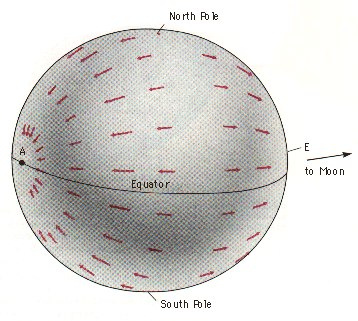
The relative magnitude of the tractive forces at
various points
on the earth's surface when the moon is at 0°
declination
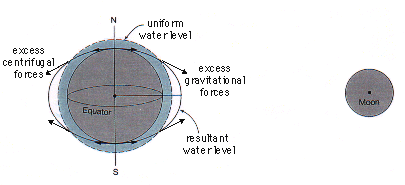
- because the earth spins, the point on the earth facing the moon is continuously changing so the locations of the tidal bulges also change
- a given point on earth that is initially at a crest or in the bulge (high tide) passes to a nonbulging area or trough (low tide), to another high tide, to another low tide, and back to the original position as the earth completes one revolution
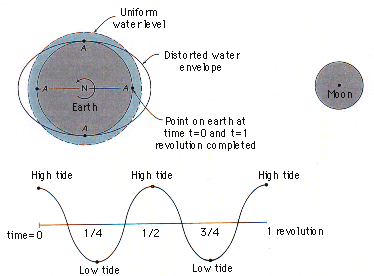
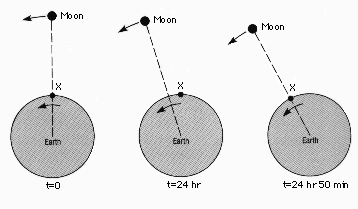
- diurnal tides (daily tides) have one high tide and one low tide in each tidal day
- semidiurnal tides (semidaily tides) have two hi and two low tides each tidal day thus a period of 12 hrs and 24.5 minutes; the tides are equal in height during each period
- mixed tides have two high tides and two low tides each tidal day, but the heights of the two high tides/low tides are not equal -- there is a higher high tide, a lower high tide, a higher low tide and a lower low tide
- results because the moon's orbit is not in the plane of the earth's equator but is inclined at an angle of 28° on either side of the equator--the angle between the equatorial plane and the moon varies over a period of 27.2 from this maximum of 28° to 0° and back to 28°
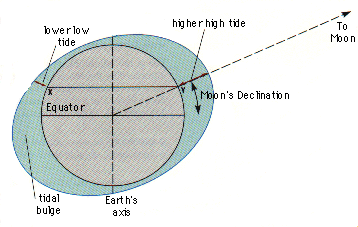
- thus the two tidal bulges will be offset with respect to the equator and the effect at a given latitude will be unequal, particularly at mid-latitudes
- because of this, the only pure semidiurnal tides occur at the equator, while most diurnal and semidiurnal tides have some mixed characteristics
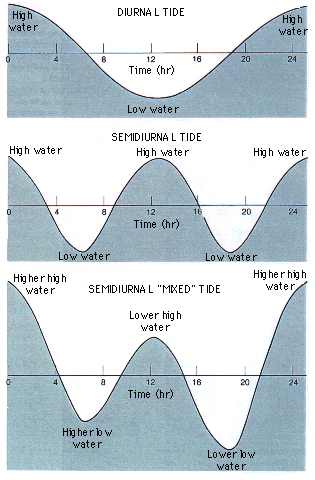
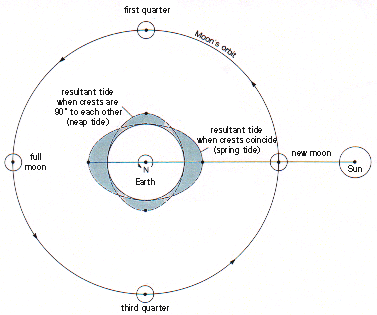
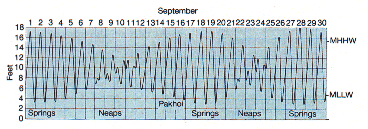
Spring and neap tides caused by the orbiting of the moon,
earth, and sun.